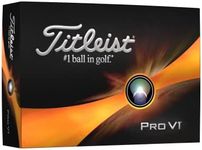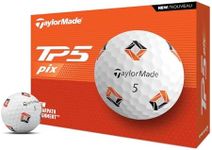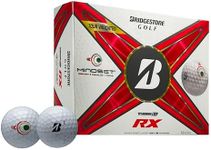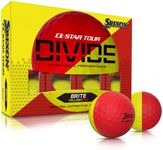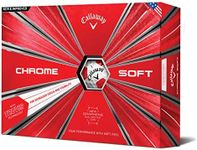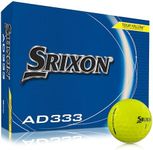Buying Guide for the Best Low Spin Golf Balls
Choosing the right low-spin golf ball can significantly impact your game, especially if you struggle with slicing or hooking the ball. Low-spin golf balls are designed to reduce the amount of spin generated when the ball is hit, which can help you achieve straighter shots and more distance. When selecting a low-spin golf ball, it's important to consider several key specifications to ensure you find the best fit for your playing style and needs.CompressionCompression refers to how much the golf ball deforms upon impact with the club. Low compression balls (below 70) are softer and can help players with slower swing speeds achieve more distance. Medium compression balls (70-90) offer a balance of distance and control, suitable for average swing speeds. High compression balls (above 90) are firmer and are best for players with faster swing speeds who need more control. Choose a compression level that matches your swing speed to optimize performance.
Cover MaterialThe cover material of a golf ball affects its feel and durability. Urethane covers are softer and provide better control and spin around the greens, making them ideal for more skilled players. Surlyn covers are harder and more durable, offering less spin and more distance, which can benefit beginners or those looking for more straight shots. Consider your skill level and what you prioritize in your game when choosing the cover material.
Dimple PatternThe dimple pattern on a golf ball influences its aerodynamics and flight stability. Balls with more dimples (300-500) tend to have a higher trajectory and more carry distance, while those with fewer dimples may offer a lower, more penetrating ball flight. If you struggle with keeping the ball in the air, opt for a ball with more dimples. Conversely, if you need a lower ball flight, choose one with fewer dimples.
Spin RateSpin rate is the amount of spin a golf ball generates when hit. Low-spin balls reduce side spin, helping to minimize hooks and slices, and can also roll further on the ground. This is particularly beneficial for players who struggle with controlling their shots. If you need more control and less curvature in your shots, a low-spin ball is ideal. However, if you need more stopping power on the greens, you might need to balance low spin with other features.
FeelThe feel of a golf ball is subjective and refers to how the ball feels when struck with the club. Softer balls provide a more cushioned feel and are often preferred by players who prioritize touch and control, especially around the greens. Firmer balls offer a more solid feel and can provide more feedback on full shots. Consider what type of feel you prefer and how it impacts your confidence and performance on the course.
